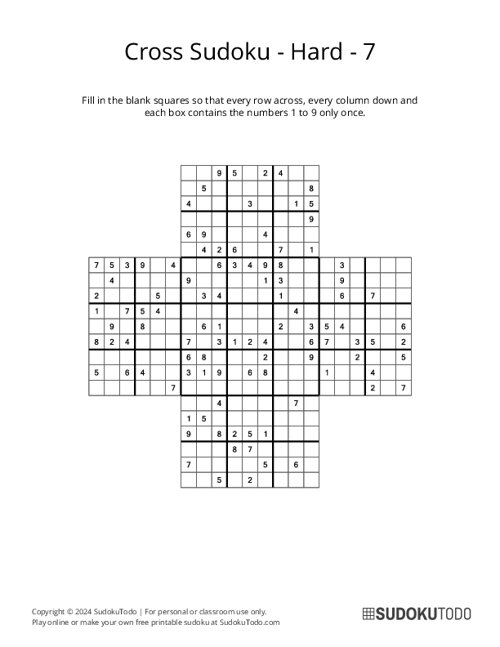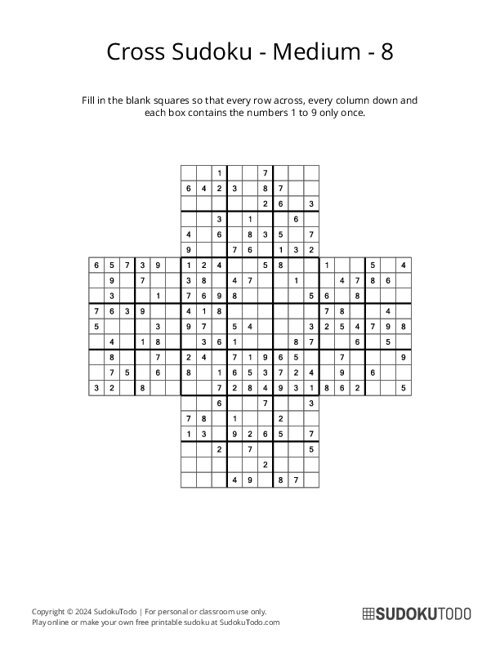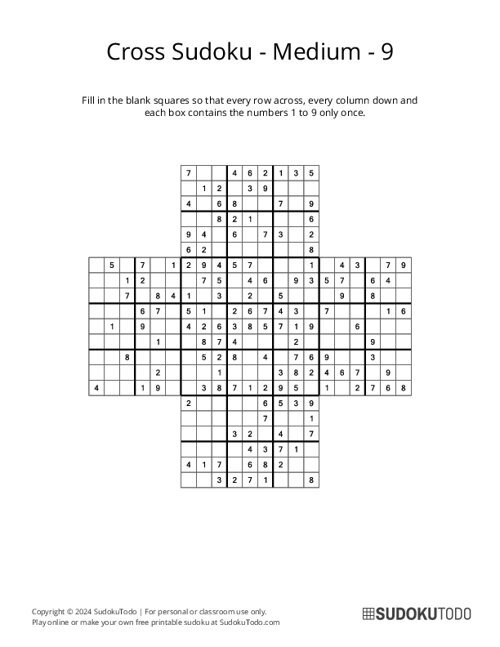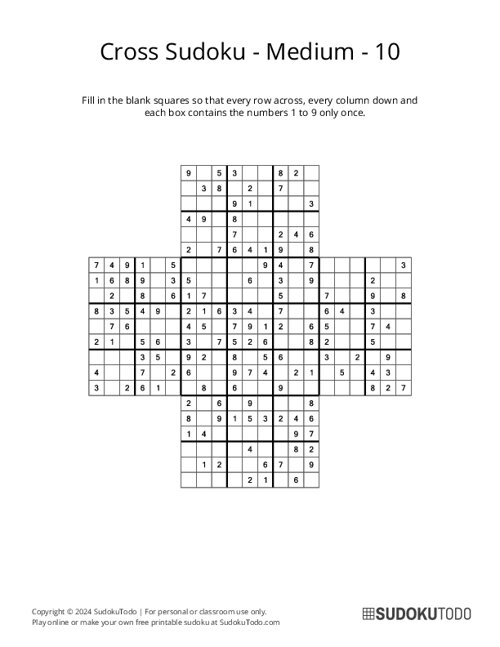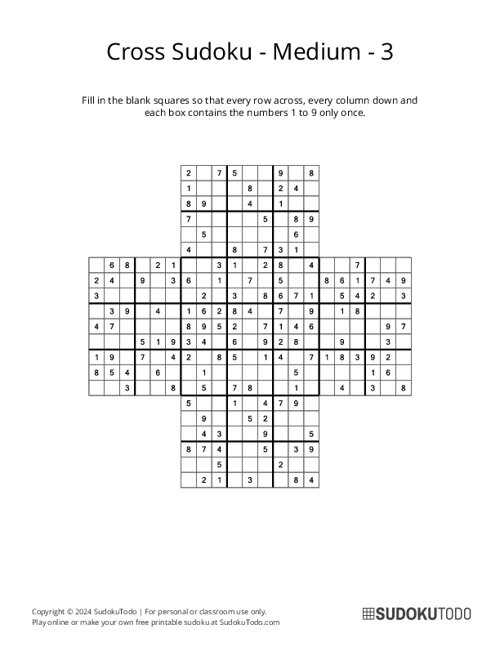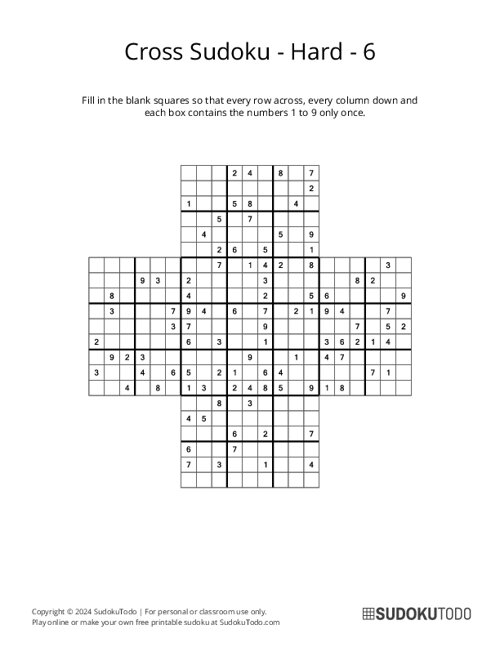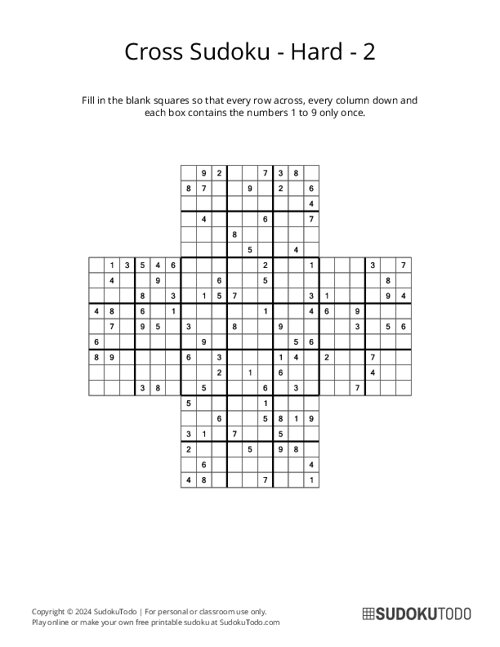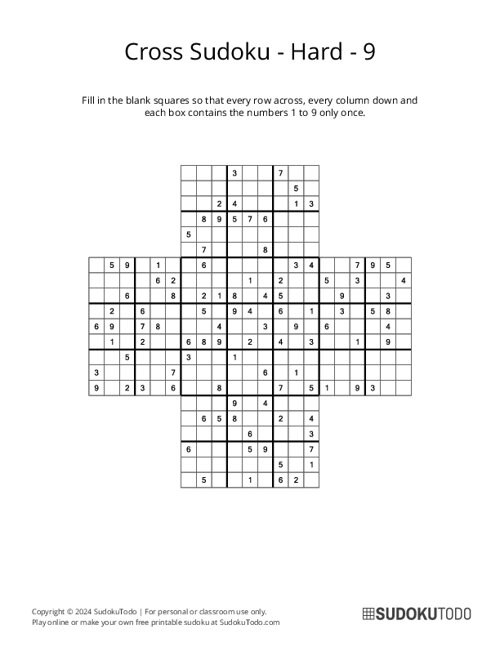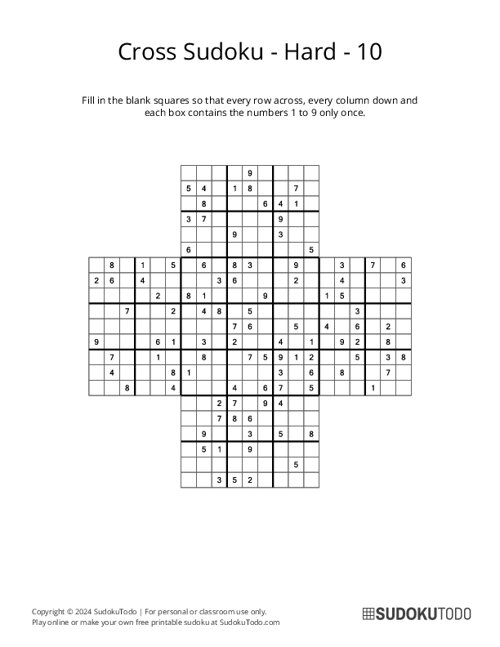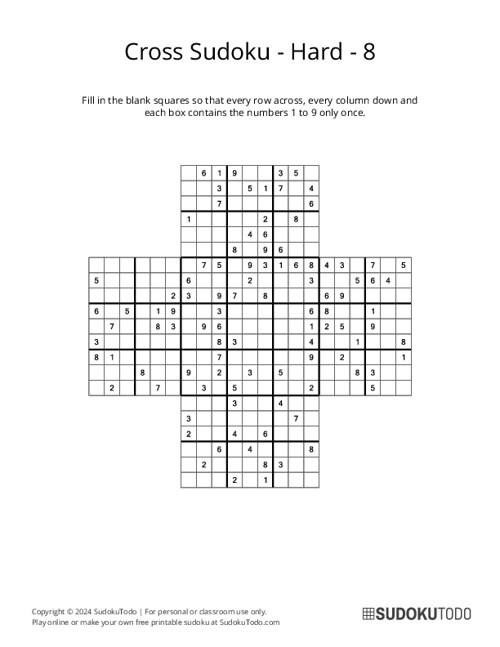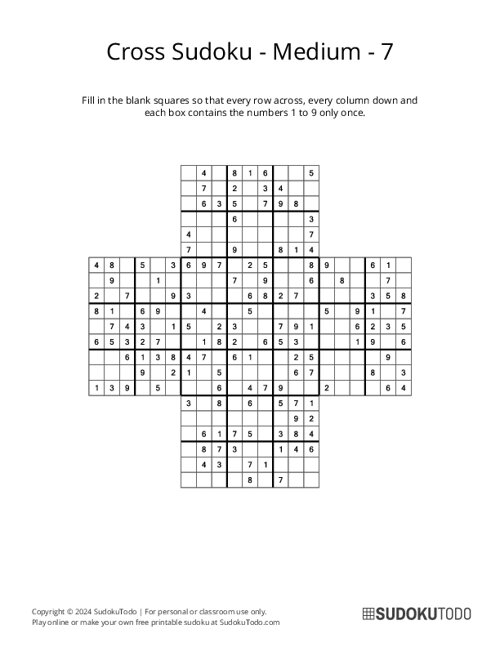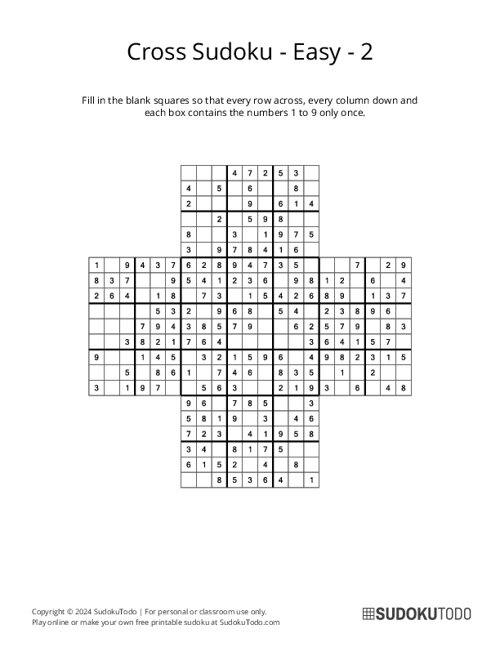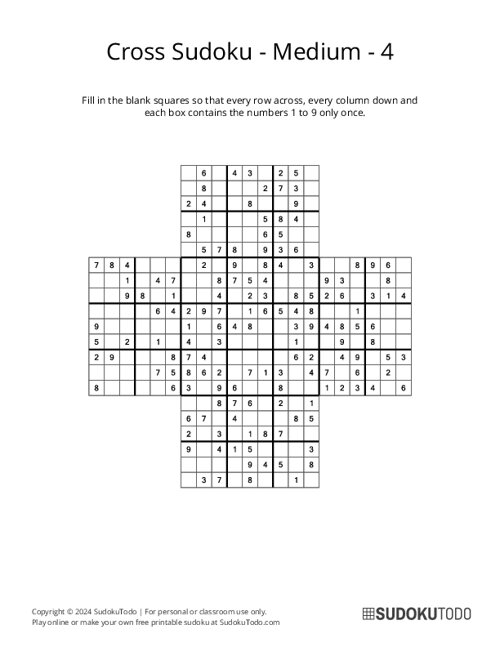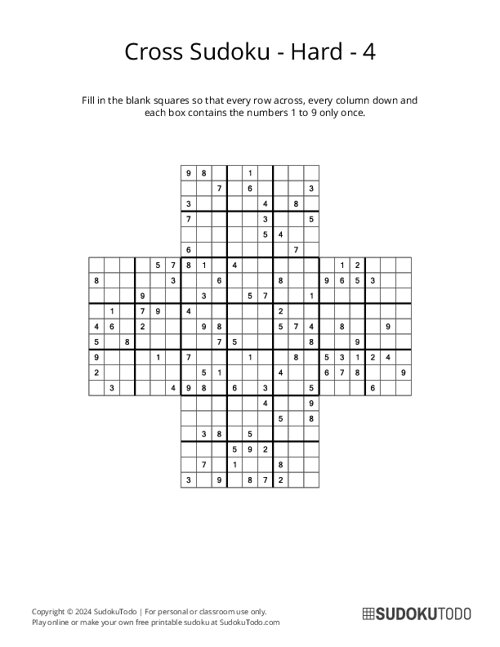Printable Sudoku
- Alphabet
- Battleships
- Binary
- Bridges / Hashi
- Chain Sudoku
- Consecutive
- Cross Sudoku
- Flower Sudoku
- Frame Sudoku
- Futoshiki
- Galaxies
- Greater Than
- Hitori
- Jigsaw Sudoku
- Kakuro
- KenKen
- Killer Sudoku
- Kropki Sudoku
- Little Killer
- Magic Squares
- Nonogram
- Odd Even Sudoku
- Outside Sudoku
- Rossini Sudoku
- Samurai Sudoku
- Sandwich
- Skyscraper
- Slitherlink
- Sohei Sudoku
- Star Battle
- Sudoku
- Sudoku for Kids
- Sudoku Mine
- Sudoku XV
- Sujiken
- Tripledoku
- Tripod Sudoku
- Twodoku
- Vudoku
- Windmill
Special Variations
Play / Solve
- Home»
- Cross Sudoku
Cross Sudoku Puzzles
Browse our huge collection of free Cross Sudoku Puzzles printables. Challenge your logic skills with these unique Sudoku variations, perfect for all ages and skill levels. Download, print, and start solving using a pen or pencil.
Showing 1-15 of 30 records
Sort by:
Cross Sudoku - Hard - 7
Cross Sudoku - Medium - 8
Cross Sudoku - Medium - 9
Cross Sudoku - Medium - 10
Cross Sudoku - Medium - 3
Cross Sudoku - Hard - 6
Cross Sudoku - Hard - 2
Cross Sudoku - Hard - 9
Cross Sudoku - Hard - 10
Cross Sudoku - Hard - 8
Cross Sudoku - Medium - 5
Cross Sudoku - Medium - 7
Cross Sudoku - Easy - 2
Cross Sudoku - Medium - 4
Cross Sudoku - Hard - 4
About Cross Sudoku
Cross Sudoku is a unique and more challenging version of the traditional Sudoku puzzle. Instead of working on just one 9x9 grid, this variation uses five 9x9 grids that are arranged in a cross-like pattern. There is one central grid at the middle of the cross, and it connects to four outer grids; one on each side (top, bottom, left, and right).
The central grid plays a special role because it is shared by all the outer grids. This means that numbers placed in the central grid affect not just that grid but also the four surrounding ones. Players must solve all five grids while following the usual Sudoku rules, which state that each row, column, and 3x3 sub-grid must contain the numbers 1 through 9 without any repeats.
Structure and Layout
- Grid Structure: Cross Sudoku is made up of five 9x9 grids, with one central grid and four additional grids arranged around it, creating a cross formation.
- Intersections: The central grid intersects with each of the four surrounding grids at a 3x3 sub-grid. These intersections create a complex interplay between the grids, as numbers placed in the central grid affect all four surrounding grids.
Rules / How to Play
- Number Placement: Each grid must be filled with the numbers 1 through 9.
- No Repetition: Numbers must not repeat within any row, column, or 3x3 sub-grid of each 9x9 grid.
- Shared Central Grid: The central 9x9 grid acts as a common area for all four surrounding grids. Numbers placed in the intersecting sub-grids must satisfy the Sudoku conditions for both the central grid and the intersecting grid.
Solving Tips and Techniques:
- Start with the Easiest Grids: Begin with the outer grids that have the most pre-filled numbers.
- Look for Independent Regions: Identify and solve independent regions within each grid. These are sections that don't intersect with the central grid and can be solved like a standard Sudoku.
- Focus on Central Grid: Focus on solving the middle part first. This will give useful clues to help with the areas around it.
- Intersecting Regions: Focus on the spots where the central grid overlaps with the outer grids. Use what you find in the central grid to rule out options in the outer grids. Watch for patterns and connections between these overlapping areas.
Cross Sudoku is a fun twist on the classic Sudoku puzzle. It adds an extra challenge by combining overlapping grids. To solve it, you need to think about how numbers affect not just one grid but all the connected ones, making it a more exciting and rewarding experience.
